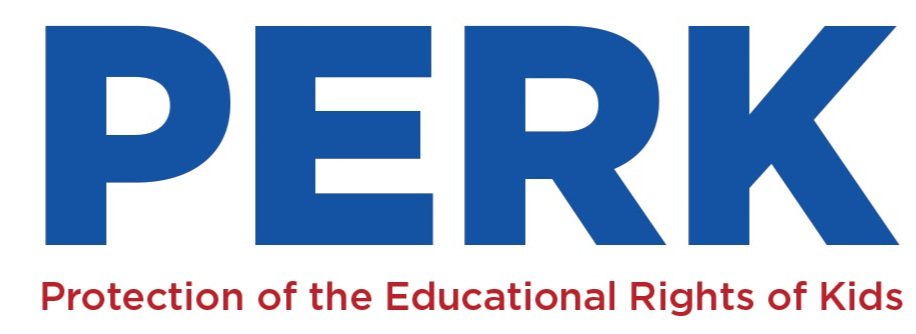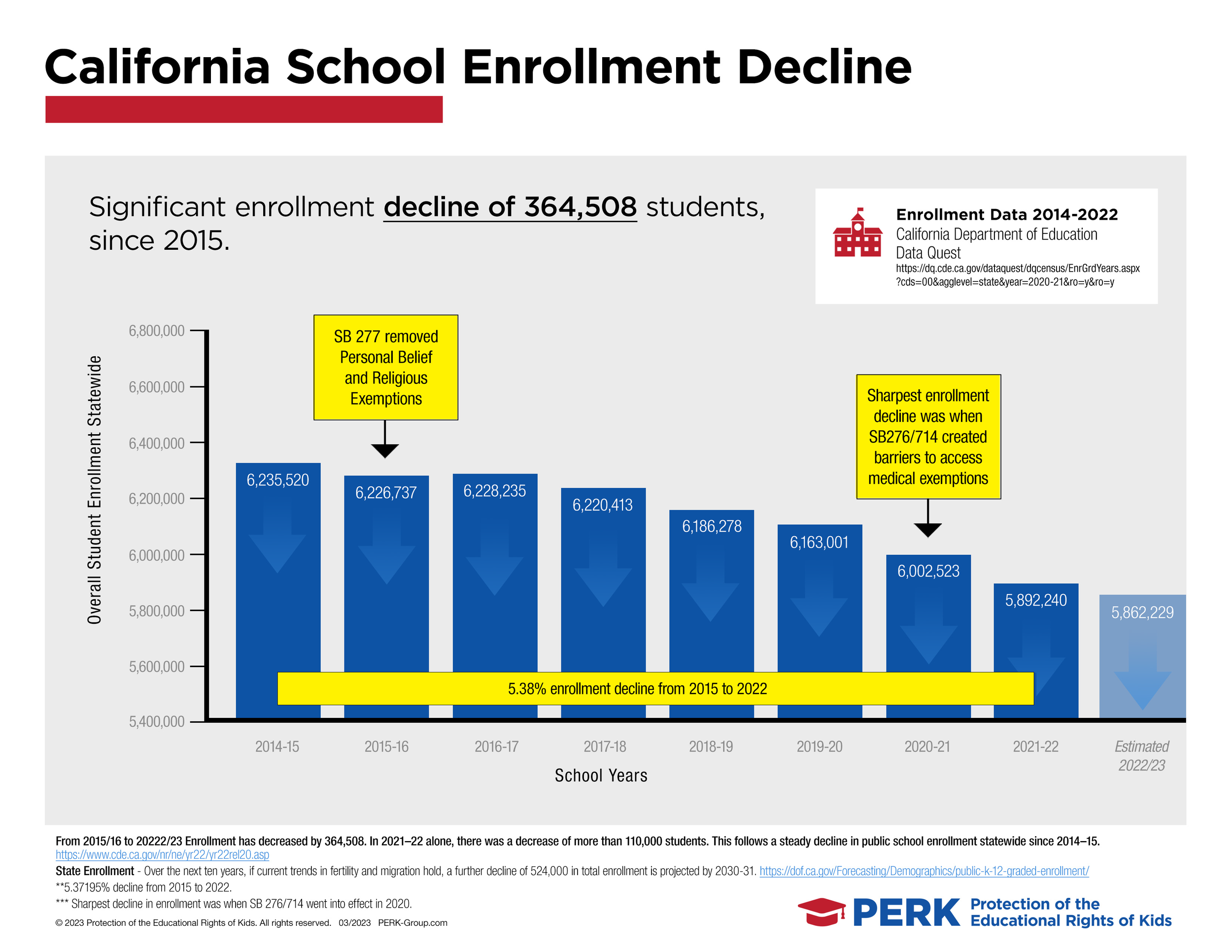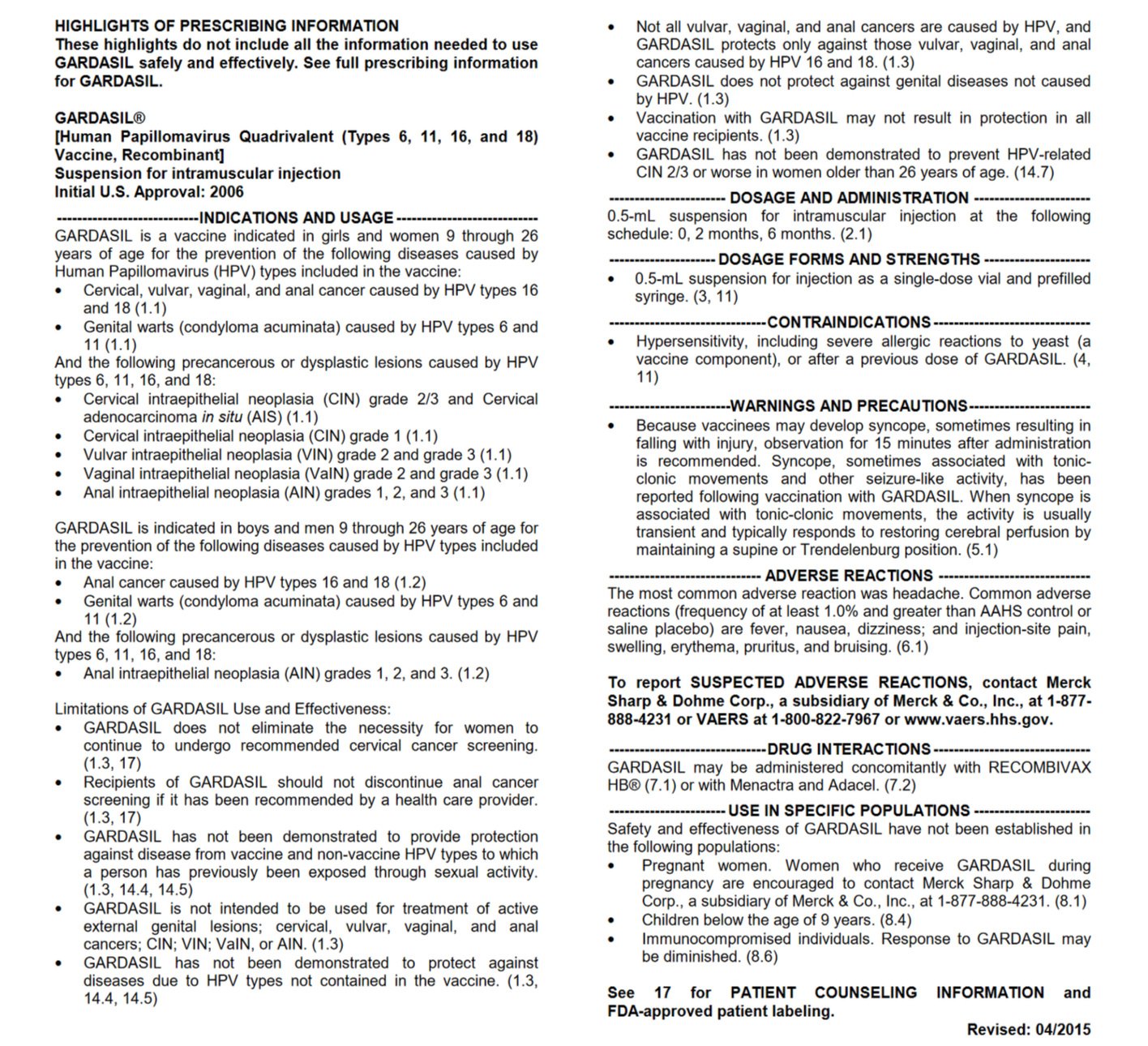5 Reasons to remove HPV vaccine mandate in AB 659:
1. Existing California law makes access to the HPV vaccine easily and readily available without parental consent or knowledge.
California already has 2 HPV policies:
Children currently learn about HPV at school with the required sex ed curriculum, AND
California reproductive rights laws allow 8th graders/minors 12 and older to consent to the HPV vaccine, medical diagnosis, and treatment for sexually transmitted infections without parental knowledge or consent. (SB 158: Weiner)
Furthermore, California has policies for prevention education and access that appear to be effective based on rising HPV vaccination rates without mandating the vaccine for school enrollment. With a current HPV vaccination rate of 75% for adolescents without a mandate, the insurance portion of this bill will also expand access.
There are more effective approaches to prevent the spread of hpv and lower the rate of cancer. Public health officials have long recommended the Pap test (also known as Pap Smear), which detects abnormalities in cervical tissue, and HPV DNA testing, as the most effective frontline public health response to the disease.
2. In order to ensure a robust and diversified student population, the focus should be on minimal requirements for school enrollment.
HPV is not transmitted in a classroom setting and an HPV vaccine mandate is not necessary to be safe at school. School is compulsory and must be easily accessible for all children in California. Required Vaccine policies with limited exemptions have placed barriers for tens of thousands of students to attend public and private school. These type of medical intervention mandates take choice from parents, while adding distrust and skepticism to our education system.
Access rather than mandates support vaccination rates without risk of further impacting the enrollment rates. Mandated vaccinations and removal of exemptions has been a contributing factor for a concerning decrease in school enrollment since the 2014-2015 school year. Enrollment rates across the state have been in decline since the 2014-2015 school year, losing over 300,000 students in less than a decade. Working to improve cancer prevention without creating additional requirements for school enrollment is a priority.
Vaccination Laws currently eliminating exemptions:
● SB 277 (2015) Eliminated Personal and Religious Belief exemptions to immunization.
● SB 276 (2019) Made the Medical Exemption unattainable for vaccine vulnerable families.
3. Cancer prevention should not be a requirement for school enrollment.
A mandate to protect yourself from cancer is not a necessary requirement for children to participate in school when the HPV Vaccine manufacturer clearly states this vaccine DOES NOT PREVENT all HPV related cancer nor provides protection in ALL recipients. AB 659 “Cancer Prevention Act” directly contradicts the Vaccine manufacturers own fact sheet.
4. Unlike other required vaccines, the HPV vaccine is the subject of multiple cases of current litigation for adverse reactions in teen girls. There have been over 59,831 serious adverse events including death. Considering that there is only 1 HPV vaccine available, and it is under scrutiny in the courts, this is not a good candidate for a statewide mandate. The law offices of Wisner Baum LLP, who represent hundreds of Gardasil injured girls and boys stated:
“Hundreds of young women and men across the United States are filing lawsuits against the manufacturer of Gardasil (Merck) claiming Gardasil caused them to suffer serious life altering side effects, including death. Several cases are pending in various California state courts, and the Judicial Panel on Multidistrict Litigation recently consolidated all federally filed Gardasil cases before one judge in North Carolina.”
5. Religiously held beliefs. If a family has religious reasons to decline the HPV vaccine, there are no current adequate exemptions that would allow them to exercise their first amendment rights and respect their sincerely held religious beliefs.
Sources:
AB659https://leginfo.legislature.ca.gov/face/billNavClient.xhtml?bill_id=202320240AB659
SB277-https://leginfo.legislature.ca.gov/faces/billNavClient.xhtml?bill_id=201520160SB277
SB276-https://leginfo.legislature.ca.gov/faces/billTextClient.xhtml?bill_id=201920200SB276
HPV Rates: https://www.cdc.gov/mmwr/volumes/70/wr/mm7035a1.htm#T1_down
Gardasil:https://www.fda.gov/files/vaccines,%20blood%20&%20biologics/published/Package-Insert---Gardasil.pdf
School rates: https://www.cde.ca.gov/nr/ne/yr22/yr22rel20.asp
AdverseReactions:https://wonder.cdc.gov/controller/datarequest/D8;jsessionid=2BF198235C886EEFF760EEF7672A
Abstinence: http://www.ampartnership.org/most-students-choose-abstinence/






